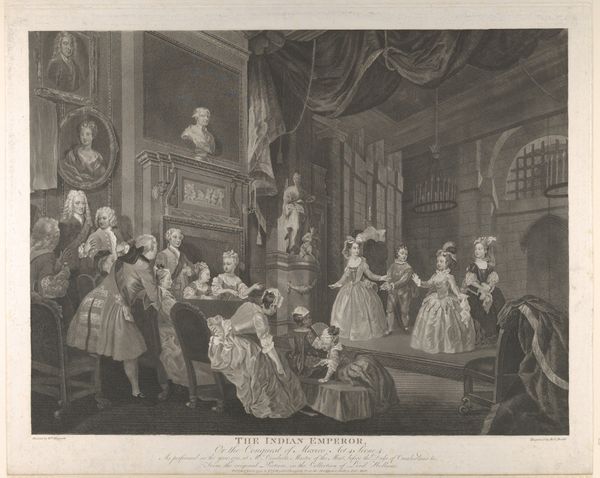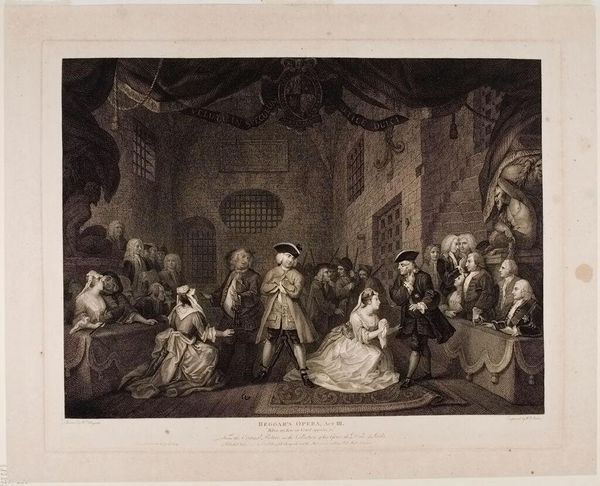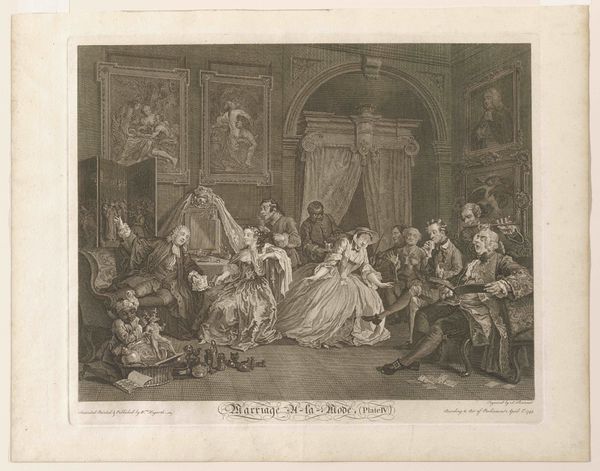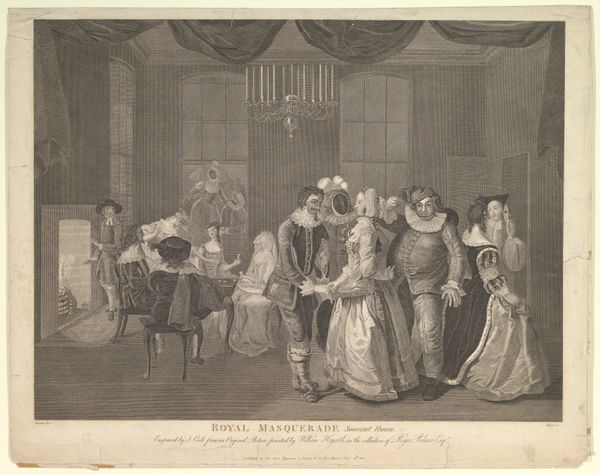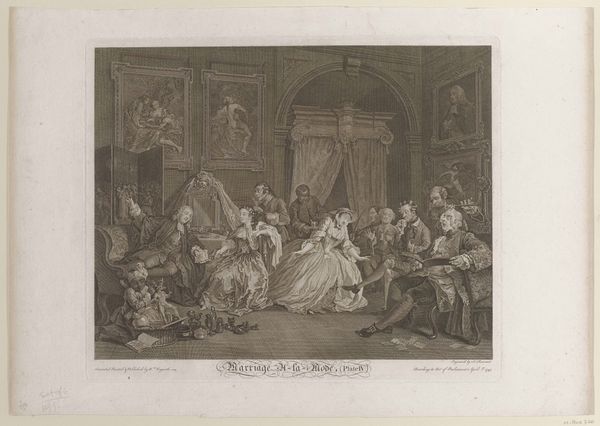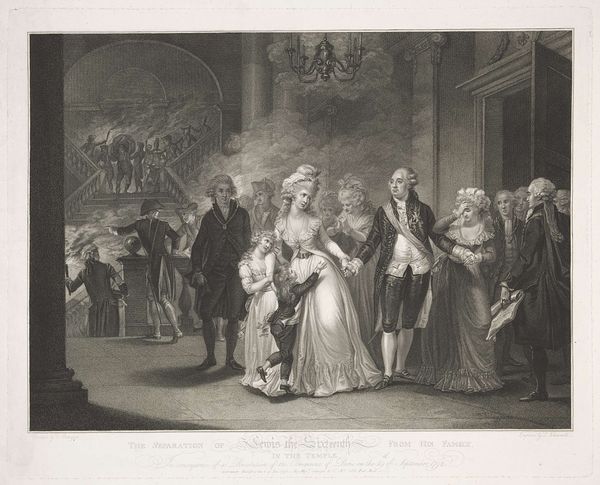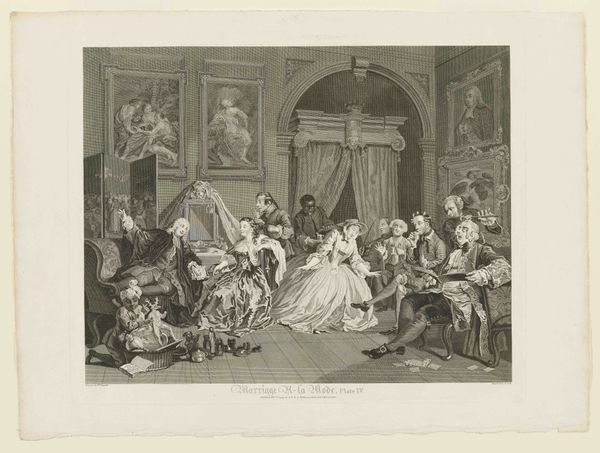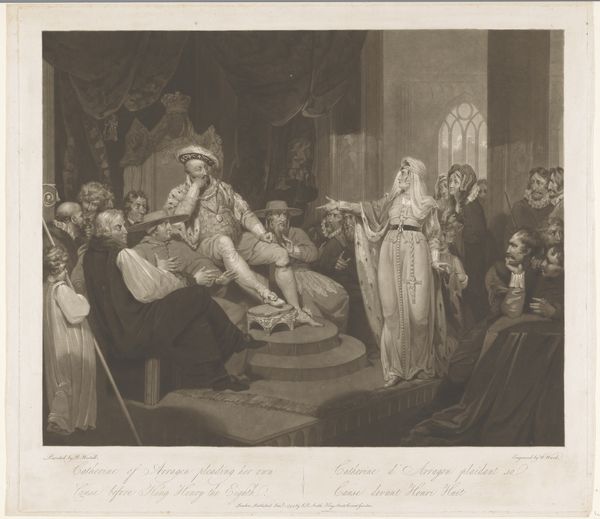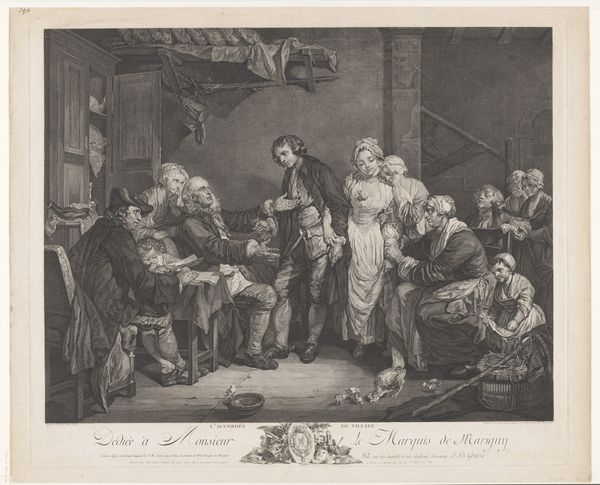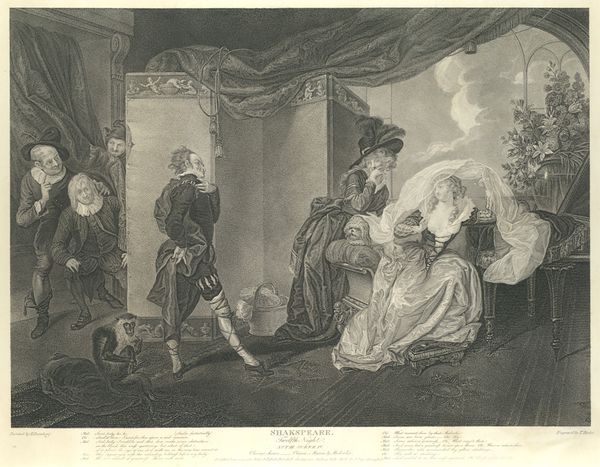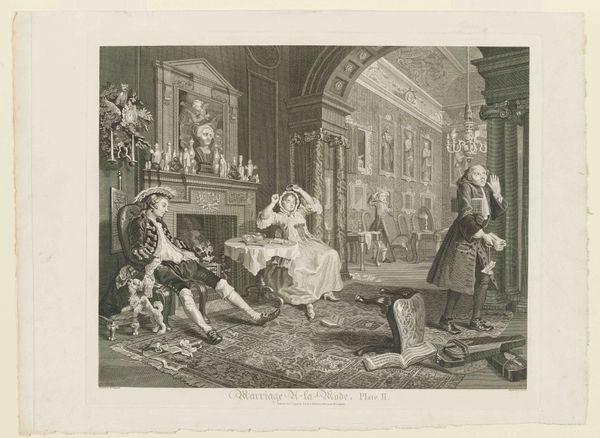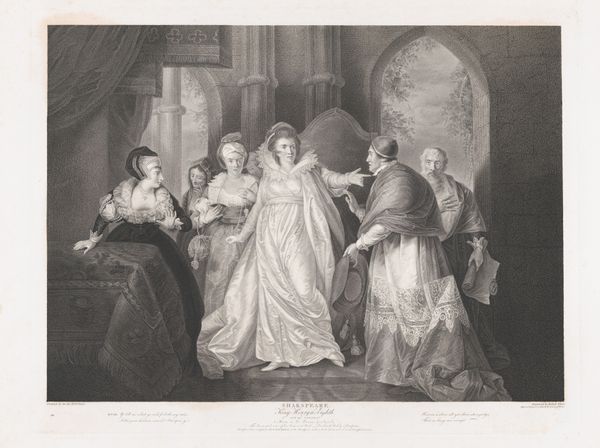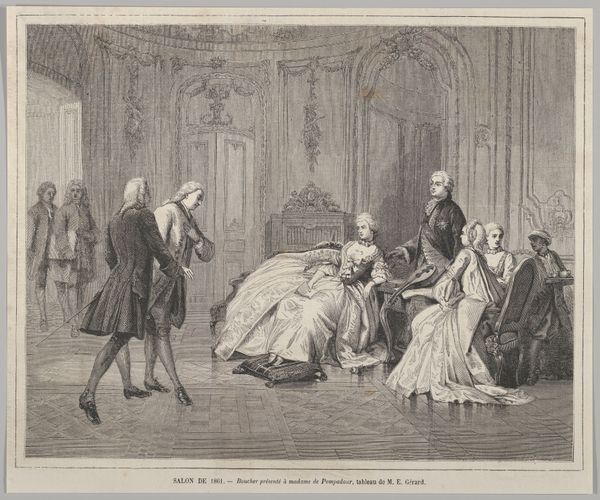
drawing, print, engraving
#
portrait
#
drawing
#
narrative-art
# print
#
figuration
#
men
#
genre-painting
#
history-painting
#
academic-art
#
engraving
Dimensions: Plate: 18 x 23 1/8 in. (45.7 x 58.8 cm) Sheet: 19 5/16 x 26 9/16 in. (49 x 67.5 cm)
Copyright: Public Domain
Editor: This is "The Beggar's Opera, Act III," an engraving made by William Blake around 1790. It feels very theatrical, almost like a stage play captured in a single image. With its deep shadows and detailed figures, what strikes you about it? Curator: Well, immediately, I see Blake engaging in a commentary on social and political structures. "The Beggar's Opera" itself was a satirical work that critiqued the corruption of the upper classes, drawing parallels between criminals and politicians. Consider how Blake positions these figures. The setting is prison, yet everyone is so finely dressed. What do you think this juxtaposition suggests? Editor: It suggests that even within confinement, social hierarchies persist. Maybe he’s saying corruption transcends even the harshest penalties. Curator: Precisely. And how do you interpret the text emblazoned across the top? Velle Velleto In Speculum, and Utile Dulci. "To hold up a mirror to vice" and "to blend pleasure with usefulness". How do you suppose that applies here? Editor: I'd say it implies that even something entertaining like an opera, could hold up a mirror to reveal social flaws. Curator: Exactly! Blake isn't merely illustrating a scene. He's using the play to comment on his own society, pointing to the parallels between the criminals on stage and the 'respectable' figures in power. We have to remember how radical these views were. Does the knowledge about the history change your feelings? Editor: Absolutely. It makes the image even more powerful. The piece then shifts from merely an illustration to political critique. Thank you for sharing your insight on the social history around this artwork. Curator: My pleasure. It highlights how art serves not just as a reflection of its time, but also as a potent tool for social commentary and critique. I really learned something, too!
Comments
No comments
Be the first to comment and join the conversation on the ultimate creative platform.
